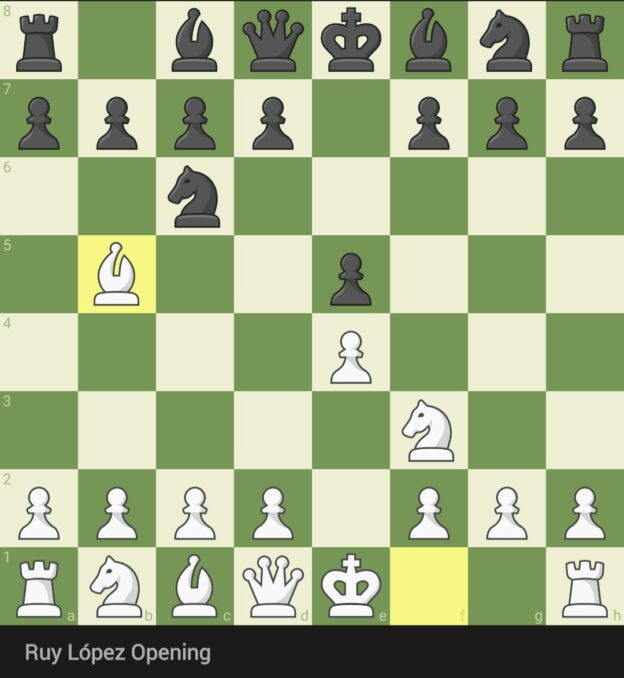Within the vast panorama of chess openings, the Ruy-Lopez stands as a beacon of strategic depth and historical significance. Initiated by the moves 1.e4 e5 2.Nf3 Nc6 3.Bb5, this venerable opening has been a staple in the repertoire of many chess luminaries, offering players a rich tapestry of positional and tactical ideas.
Historical Footprints
The Ruy-Lopez is named after Ruy López de Segura, a 16th-century Spanish bishop who penned one of the earliest chess treatises. While the opening’s strategies have evolved significantly since then, its enduring relevance across five centuries is a testament to its deep strategic underpinnings.
Fundamental Concepts
Central to the Ruy-Lopez is the tension created early on by the bishop’s pin on the knight at c6. This applies subtle pressure on Black’s e5 pawn and aims to provoke weaknesses in Black’s pawn structure. Another crucial aspect is the d3 (or sometimes d4) pawn break for White, intending to challenge Black’s central pawn on e5 and vie for central dominance.
Major Sub-Variations
The richness of the Ruy-Lopez is manifested in its numerous sub-variations, each with its unique character:
- Closed Ruy-Lopez: Characterized by …a6 followed by …Be7, it leads to complex middlegame battles where pawn structure and piece activity are paramount.
- Open Ruy-Lopez: After …Nxe4, Black accepts the gambit and the game takes on a more tactical nature.
- Exchange Variation: With Bxc6, White immediately changes the pawn structure, aiming for long-term positional advantages due to Black’s doubled c-pawns.
Strategic Themes
Several recurring motifs permeate the Ruy-Lopez:
- Pawn Structure: Central to many Ruy-Lopez positions is the d3-d4 pawn break for White and the …d6-d5 counterbreak for Black.
- Minor Piece Play: The knight maneuvers, such as Nbd2-f1-g3 or Nb8-d7-f8-g6, showcase the depth of piece play within the opening.
- Kingside Attack: Often, White aims for a kingside initiative, using pieces and sometimes pawn storms to pressure Black’s king.
Modern Legacy
Through the ages, the Ruy-Lopez has found favor among many World Champions. From Wilhelm Steinitz and Emanuel Lasker in the late 19th and early 20th centuries to Bobby Fischer and Garry Kasparov in more modern times, its appeal spans generations. More recently, Magnus Carlsen and Viswanathan Anand have further enriched its vast theory in their World Championship clashes.
In essence, the Ruy-Lopez is a microcosm of chess strategy. It intertwines opening principles, middlegame plans, and even endgame themes into a cohesive whole. For anyone keen on understanding the depths of chess strategy and history, the Ruy-Lopez offers a journey filled with intrigue, challenge, and timeless beauty.
